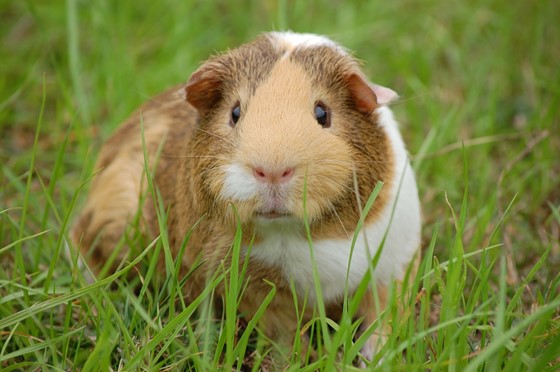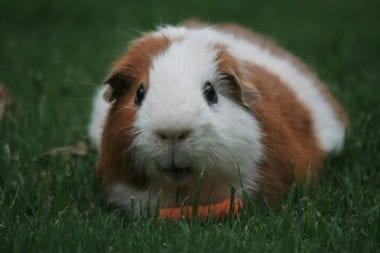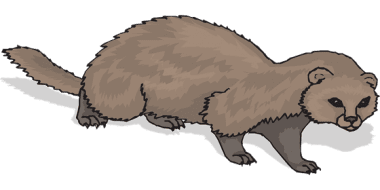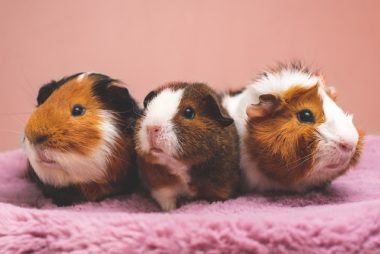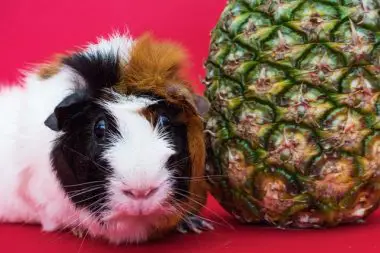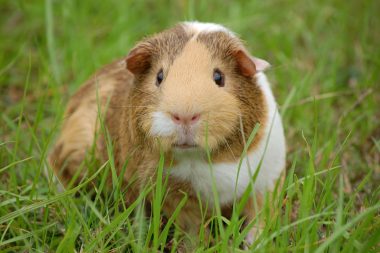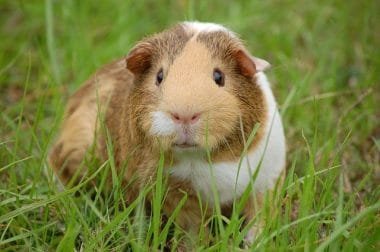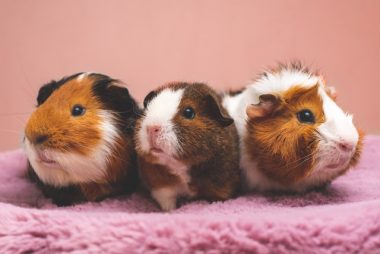
Guinea pigs are the most adorable among the rodent family to have as pets. They are cute and cuddly and really human friendly. They are active social creatures and are always up to something. They are also highly adaptive and would soon get used to their owners schedule. Having multiple guinea pigs often help them stay busy if you intend to be away for most part of the day. This makes them ideal pets to have for working individuals in urban setups.
Guinea pigs being the social rodent that they are, would often communicate in lots of different ways. There different sounds are very good sign to understand what the guinea pig is feeling currently. New owners must get accustomed to these sounds in order to better understand their pet friend. We will discuss the different guinea pig noises and what they mean in detail further in the article.
Why Guinea Pigs Makes Noise?
Guinea pigs are part of the rodent family. They live burrowing below ground levels in groups when in the wild. Their noises are a mode of communication among themselves. The different noises indicate different emotions and often help them read other guinea pigs. There are noises ranging from feeling angry to happy and cheerful. So apart from guinea noises which sound so cute, they can also help convey their emotions. A perfect companion if there ever was one for pet lovers.
Different Modes Of Communication By Guinea Pigs
The guinea pigs communicate in different ways. The owners who understand the different them all makes it much easier to have them as pets. Some of these modes include:
Communication Using Voice: The voices is their most important tool for communication. Guinea pigs a wide range of sound, each of which convey a different emotion. We will discuss the different guinea pig noises and what they mean in detail later in the article.
Physical Sign Language: Guinea pigs also communicate using their body language. They are predictable creatures and it is often easy to read there body language to understand what they feel. Few of the sign languages also have their own adorable little names.
- Popcorning : This a typical guinea pig habit to chirp around in their space when they are happy and content. The name “popcorn” came as the movement resembles a corn which is about to “pop”. Quite adorable!
- Teething/Fidgeting : Teething and fidgeting is a sign of distress among guinea pigs. They would often fidget when they are stressed.
- Baring teeth, hissing and strutting are sure signs your guinea pigs is displaying aggression.
- Piggy Train: This is a common behavior among groups of guinea pigs. They would often follow one another in a trail, much like bogies of a train. Piggy train is often observed when a group of guinea pigs are exploring a new home or a place together.
- Marking dominance by scent: Another common practice among guinea pigs is to mark their territory by their scent. This helps them locate their burrow and smell out presence of other rodents in the surrounding.
- Freezing : Another unusual behavior among guinea pigs. When a guinea pigs is startled or is not able to decide would often just go completely motion less. This is a survival instinct which serves them well in the wild. Often predators would not attack a dead animal and guinea pigs would use that for a chance at survival. Quite fascinating!!
- Touch Each Other Nose : Guinea pigs would often touch nose with other guinea pigs as way of socializing. This is quite adorable to watch and holds lot of value in terms of communication with one another.
- Sniffing Each Other : Sniffing is another common guinea pig behavior. It is a form of greeting among them and helps them remember each other using the smell.
- Mounting : Mounting is a behavior which may mean different depending upon the situation. Sometimes a guinea pig can mount another as a sign of aggression. This a show of strength whereby the guinea pig is establishing their territory or power. Other times, mounting can also mean sexual contact between a male and a female guinea pig. It is how they usually mate. It is easy to differentiate between both as it also includes other physical signs to confirm as mentioned above.
- Lick : Guinea pigs often lick as a display of love and affection. They usually lick one another and would often lick you if they like you. Guinea pigs can also lick if they like the taste of your hand. It is a handy way to feed them treats and also build a bond.
- Toss of Head : A guinea pig would often toss its head around when it is annoyed at something. So next time your guinea pig toss around when you go to pick it up, it would mean annoyed and would want you to stop.
- Aggression : An aggressive guinea pig would often strut around, raise its hind legs and shuffling around. They would also fluff their fur out and yawn away their teeth. These are signs of caution.

Different Guinea Pig Noises and Their meaning
Guinea pigs have a range of sounds they make. A contented guinea pig would often make low noise sounds from chortling to rumbling. There are also the occasional shrieks and cracks. Annoyed guinea pig would often hiss and shriek depending upon the level of danger they perceive.
In this article, we will list out different guinea pig noises and what they mean for their “humans”. We will also discuss few behavioral trait among guinea pigs which are also important sign language to get used to.
1) Wheeking
Guinea pigs make this high frequency whistling or loud squealing sound when they are excited or anticipate something they like. This often occurs when the guinea pig anticipate it is about to receive a treat. Urban guinea pig pets would often when wheek when they hear the fridge open or see their owners approach with food in hand. Sometimes wheeking is also a sound to seek attention. It is a sound of a happy guinea pig.
2) Purring
Different purrs carry different meaning. It usually depends up on the pitch of sound. The purring is often accompanied by other such body languages. This is another sign of a content Guinea pigs which feel comfortable in its environment and acknowledge that by making the deep purring sound. It is followed by a more calm and composed posture and relaxed outlook. However, there is another high-pitched purr which occurs towards the end of the purr. This is the outcome of a sign of annoyance and mean caution. An annoyed guinea pig which is making a high-pitched purr noise will get tense in body and would vibrate as a result. A purr which is indication anxiety or stress would also get accompanied by the guinea pig going motionless, which is an evolutionary survival tactic.
3) Rumbling
A deep and low rumbling noise is similar to purring. It is often made when a male guinea pig would romance a female. A female who is in mating season would also make rumbling noise to let the male know. A rumbling sound is also followed by a common mating dance which is quite a sight to behold.
4) Teeth Chattering
Teeth chattering is indicative of aggression. The chattering vocalization would mean the guinea pig is agitated or angry. Teeth chattering would be followed by what is called as “teeth yawning”. This is a display of teeth which is quite the obvious indication that the piggy is angry.
5) Hissing
Hissing is another sign the guinea pig is upset. It sound just like the hissing noise a cat or snake make when alarmed.
6) Cooing
Cooing is a comforting noise made by mother guinea pigs to comfort. A female guinea pigs are also known to make cooing noises.
6) Shrieking
An ear piercing, super high-pitched squeak. It is also called a shriek and is a clear indication for a call of fear, pain or alarm from your guinea pig. If you ever hear a shriek from the guinea pig, it is recommended to check with your furry friend for signs of distress. If there are multiple guinea pigs, chances are the guinea pigs are fighting in between and it would not harm to make sure they are ok.
7) Whining
Another common forms of annoyance behavior is the whining sound guinea pigs make. Though it indicates annoyance, but on a mild side. Whining can be compared with a moaning sound by other rodent animals.
8) Chirping
This is a rare yet mysterious sound made by guinea pigs. The sound is similar to chirps by birds and other creatures. The chirp noise is very rare and usually it follows the guinea entering into a trance like state which is slightly different from the motion less state. It is quite the mystery as to why guinea pigs chirp.
